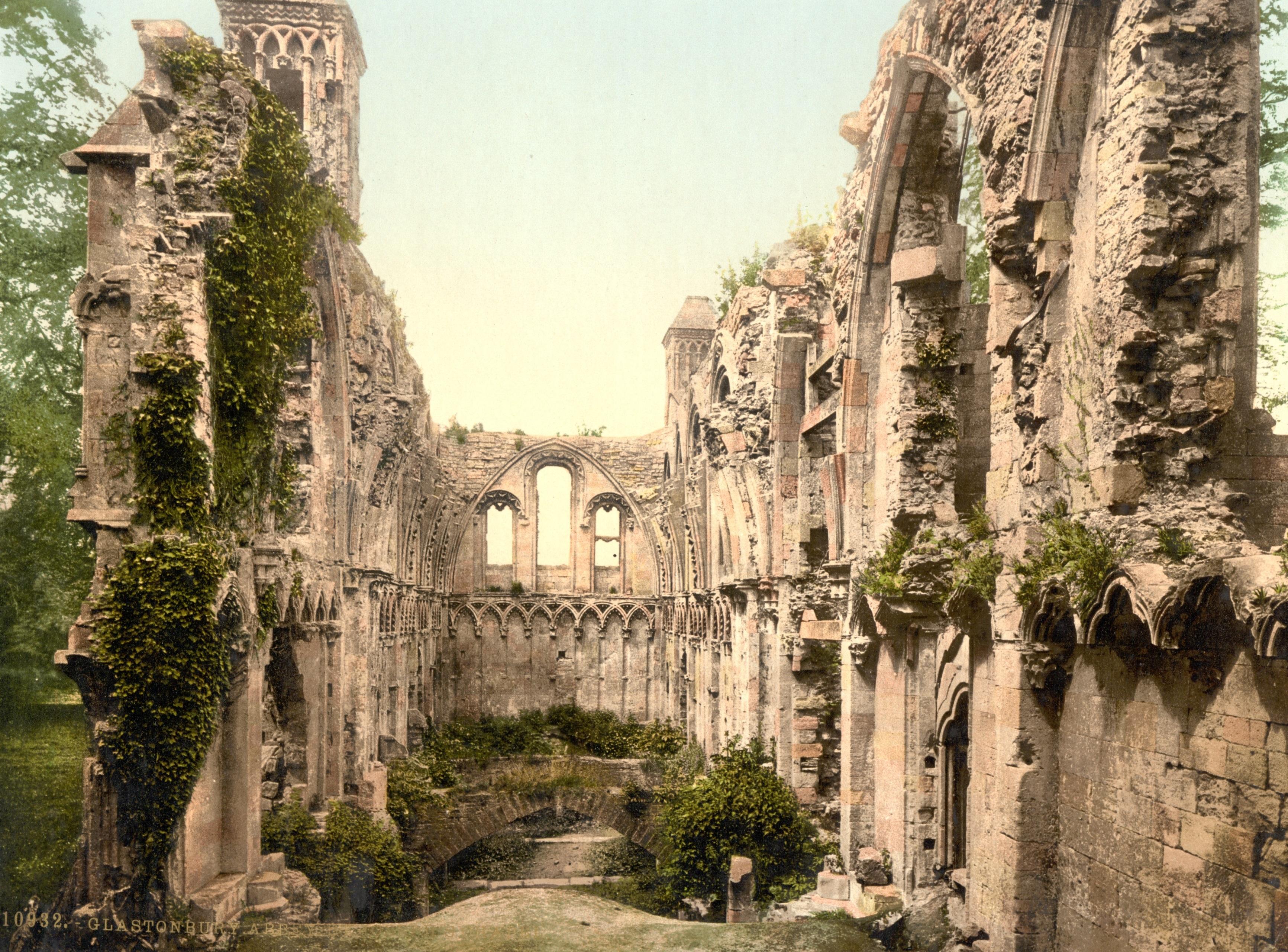St John the Baptist
Glastonbury, Somerset
A very fine, tall tower helps this town church to hold its own among its more famous neighbours, Glastonbury Tor and the abbey ruins.

Glastonbury Abbey is connected with legend to a degree that is unparalleled by any other abbey in England.
Glastonbury, Somerset
Since Medieval times it has held legendary status as the earliest Christian foundation in Britain linked to Joseph of Arimathea and the burial place of King Arthur. The internationally renowned site attracts visitors from around the world for its history, heritage, myths and legends as well as for its spiritual enrichment and there has been a church on the site for at least 1500 years with evidence of even earlier occupation.
Glastonbury was the richest monastery in England at the end of the Saxon period and was second only to Westminster at the close of the Middle Ages.
Its Abbot lived in considerable splendour and wielded tremendous power with the main surviving example of this power and wealth to be found in the Abbot’s Kitchen, one of only three surviving medieval examples in the world.
It’s history is intertwined with English traditions; one of its Abbots, St Dunstan, wrote the Coronation words last used for the coronation of our present Queen Elizabeth II and William Blake’s popular ‘Jerusalem’ is said to be written about the story that a young Jesus, accompanied by Joseph of Arimathea, visited Glastonbury.
The Holy Thorn which grows at Glastonbury Abbey has become part of the legend of Joseph of Arimathea. According to the story when Joseph arrived in Britain he landed on the island of Avalon and climbed up Wearyall Hill, exhausted he thrust his staff into the ground and rested. By morning his staff had taken root and it grew into the miraculous thorn tree which flowers every Easter and Christmas.
Glastonbury Abbey is said to be the final resting place of King Arthur. In 1184, a great fire destroyed the monastic buildings and pilgrim visits fell. However in 1191 the discovery of Arthur and Guinevere’s tomb was reported, providing fresh impetus for visiting. The monks told how while digging they had discovered two skeletons, above was a leaden cross with the inscription 'Here lies interred the famous King Arthur on the Isle of Avalon' written in Latin. In the 13th century King Edward I and Queen Eleanor attended the reburial of King Arthur’s bones in the choir. Artist impressions of the tomb can be seen today in the abbey’s museum.
In 1536, during the 27th year of the reign of Henry VIII, there were over 800 monasteries, nunneries and friaries in Britain. It is said that, at the time of the dissolution, Richard Whiting, the last Abbot of Glastonbury, hoping to appease Henry VIII, sent his steward Jack Horner to London with a Christmas gift. The gift, a pie, had hidden under it's pastry crust, the deeds of twelve manors. On the journey, Jack opened the pie and removed the deeds of Mells Manor, in the village of Mells.
By 1541 there were none and the last abbot of Glastonbury, Richard Whiting was hung, drawn and quartered on Glastonbury Tor; a brutal end for a pious man. It is said that, at the time of the dissolution, Richard sent his steward Jack Horner to London with a Christmas pie to appease Henry VIII. The pie had the deeds to 12 manors hidden under it's pastry crust. On the journey, Jack opened the pie and removed the deeds of Mells Manor.
Today the Abbey is a tranquil setting in which visitors can discover our stories. We look forward to meeting you.
Glastonbury, Somerset
A very fine, tall tower helps this town church to hold its own among its more famous neighbours, Glastonbury Tor and the abbey ruins.
Glastonbury, Somerset
Glastonbury Tor has been a site of religious significance for over 1000 years and is known as being one of the most spiritual sites in the country, as well as its close links to Christianity, its pagan beliefs are still very much celebrated.
Butleigh, Somerset
There has been a church on this site since Saxon times; much of the present configuration and appearance dates from the mid 19th century.